Hail to the King of the 50’s. The Leica 50 Summicron f/2 APO.
If one thing is sure to stir up controversy, it is something written positively about Leica on these pages, lol. It never fails. Well, if Leica is a touchy subject for you..turn away now my friends as I have a doozy for ya. Today a package arrived from USPS and inside was a brand spanking new Leica 50 APO ASPH f/2 Summicron lens. Yes, the one that sells for an eye popping, wallet busting, bank draining $7400. The one I called OUTRAGEOUSLY overpriced at launch (before seeing what it could do) and then when I was able to use one for a couple of days I fell hard and fast for it on the M240. WHY? Well, this is the ONLY lens on the M 240 that I feel can fully do justice to the sensor when it comes to detail and color. It also is THE lens for the Monochrom according to many at Leica.
FACT: This lens renders colors totally different than any other lens on the M. When looking at this lens side by side with the old cron or even 50 lux the colors of the older lenses appear a bit dull and different. They are still fantastic though and there is nothing quite like a 50 Summilux but when Leica says this 50 APO is the best lens they have ever made, believe it because it truly is. Really.
This lens excels in all areas. In color, contrast, sharpness across the frame, distortion, bokeh and absolutely no CA or color issues etc. It is a cost no object design, which is what they set out to do from the get go. It is a statement lens that they expected to sell to a few here and there but it has ended up becoming one of the most desired lenses in the Leica lineup due to the fabulous rendering it creates. The problem is that Leica can only produce a small handful of these every month as they are so challenging to make. Many of the 50 APO’s never make it out of the factory as if they are not 100% perfect they get tossed and I believe Leica is even losing money on this lens, but they still make it because it is a lens that shows what they can do. There is no way Leica could make this lens and sell it for $3k or $5k. It just would not exist as it is. It is an optically corrected lens and 97.9% perfect. That kind of perfection costs, and no, there is no other 50mm lens in the 35mm world that can compete with the Leica 50 APO. No Canon, no Nikon, No Pentax, None.
So for over a year I have wanted this lens and I have been shooting with the standard 5o Summicron for a while now preparing for the new APO to arrive. The new lens is now here and I stick by what even I said over a year ago. This lens is the best lens Leica makes, period. It is near perfection in a 50mm lens. No distortion. No flare. No CA. Amazing rich color. True Leica build. Smooth operation. Small size. Oh so slight Vigentting at f/2 and gone by 2.8. It even has a sweet twist out built in hood that is genius.
The detail capability of this lens on the M 240 is jaw dropping. It is as close to medium format as you can get in 35mm and the only lens that will deliver near Medium Format quality on the M 240. I predict that in 4-5 years this lens will be selling closer to $9,000-9,500 than the $7400 of today. Buying and owning a lens like this is “money in the bank” as I always say.
The original Noctilux for example sold new for $3500 when I bought a copy from B&H Photo many years ago. Today it sells USED for $7000. I bought a 35 Summicron for $1300 new about 9 years ago, today they are $3200. So Leica lenses appreciate, especially the rarer special lenses like the 50 cron APO.
This is a lens for the 50mm connoisseur. One who loves the 50mm focal length and wants the best of the best. I even prefer it to the $11k Noctilux in Color, Bokeh, sharpness and most of all, Size. Of course this can not give you the Noct shallow DOF look but the Noct can not give you what this cron does either. Size is perfect here. One thing to keep in mind is that this lens sells for about the same as a used Noctilux F/1, the old version of the Noct. Leica lenses are not cheap and never will be.
For most of you, the 50 Lux is the #1 lens to get for the M. It is beautiful and has its own unique style and character and is probably the best selling Leica lens of recent years for good reason. For those of you with a 50mm fetish like me, you must at least TRY the 50 APO at least once in life. I have no clue if this one will stay with me long term as I get all weird about spending so much on a lens but I at least wanted this one for the next few weeks to take with me on a vacation I am taking with Debby. I will use the lens and when I return I will write up my full review of it with comparisons to the current 50 Summicron NON APO and the 50 Zeiss ZM to show you exactly what that extra few grand will get you. If my jaw drops and I get shots that blow me away I will keep it as my main lens for the M.
A video from last year when I 1st took a look at the 50 APO along with the 50 Lux and 50 Noct
So stay tuned for a full written review and video review and comparison coming in the weeks ahead. I have had the lens for only a few hours so only had a chance to take it around the house for a few snaps but wow, I am blown away by the detail, the Bokeh, the color and the beautiful build of this little jewel. When I get out there and get serious with it in the coming weeks I feel this lens will really speak to my heart. Damn, it should at the cost. But hey, this is Leica of course 😉 To be clear, No one..NO ONE needs this lens. This is a lens that will be bought out of lust, foolishness and passion. 🙂
Mine came from Ken Hansen at khpny19@aol.com. I believe he has a pretty hefty waiting list as do all dealers. You can do like I did and shoot a standard 5o cron while you wait for a year on the 50 APO 😉 FInally, to see my last report on the 50 APO that was written up over a year ago, click HERE.
A few snapshots around the house from today, YOU MUST click them for the larger versions to see them correctly.
–
The image below is a 100% full size file. Right click it and open in a new window to see the detail. The focus point is on the piece of bark sticking out near the middle of the frame.
and the rooster shot from my 1st look..
Does anyone here own the 50 APO? If so, what are your thoughts on it after using it for a while? Feel free to chime in below.

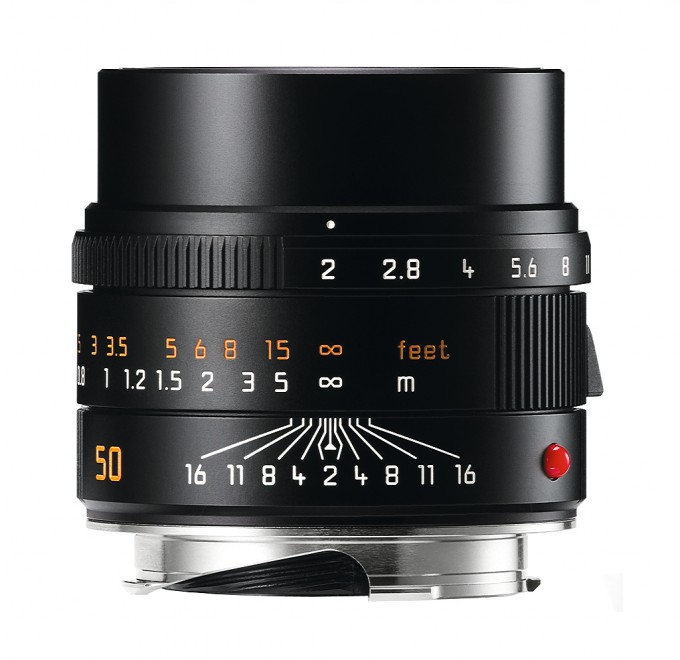





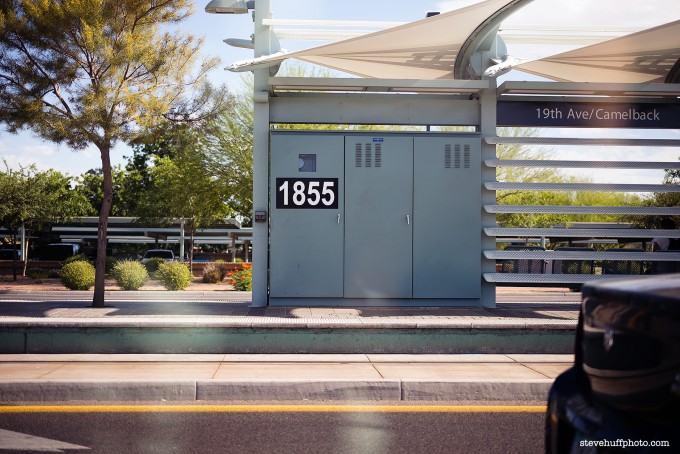

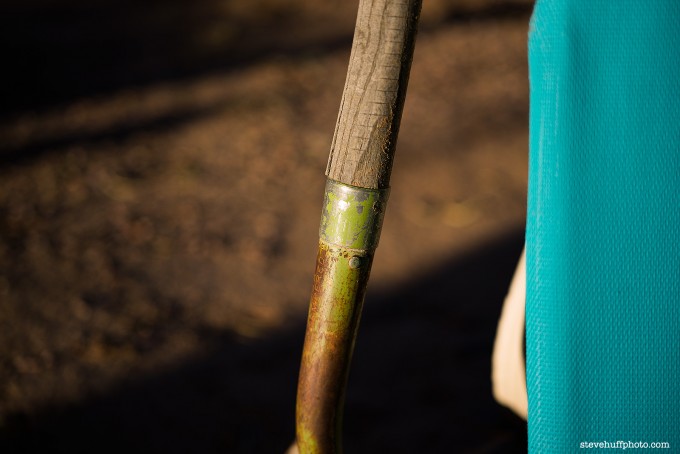

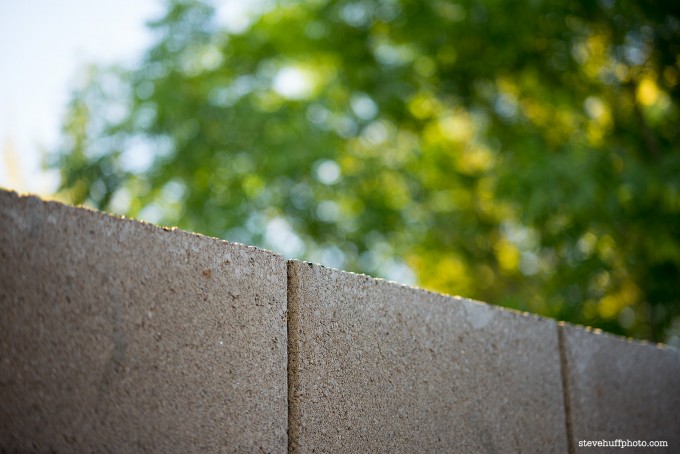
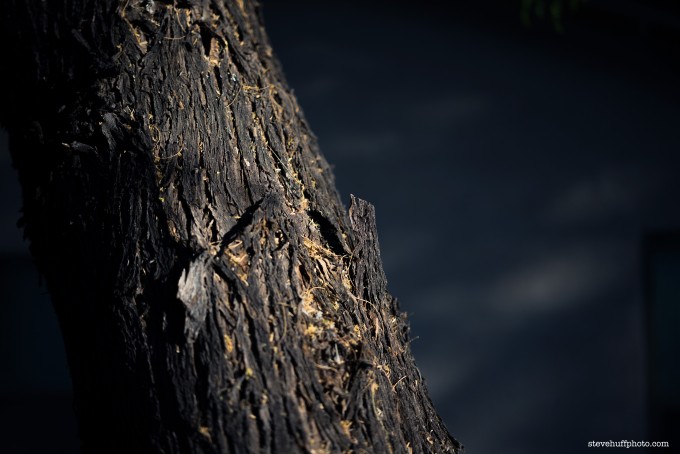
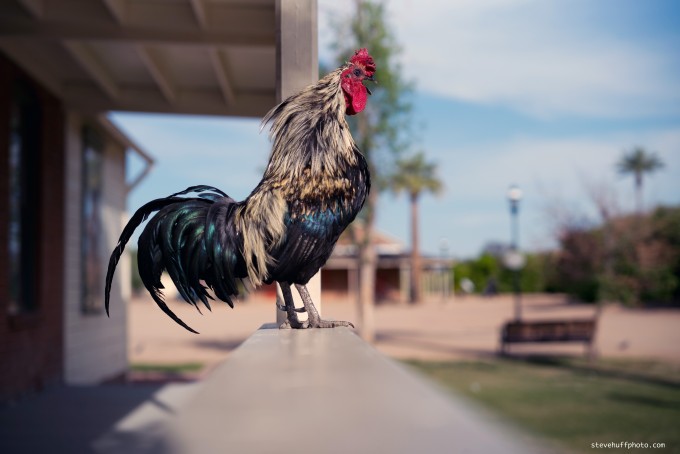



Mein Got !!! Ridiculously expensive but the lens is a stunner, just makes any photo spectacular!!!
You either see the difference in IQ or you dont. If you dont this lens is not for you.
I hate to be a comprehensive review of steeve because I’m selling my 50 Lux Asph for a new Apo Summicron 50 …. Q’en think you dear Steve I confirm my order 🙂
http://www.benoitlinero.com
I have to agree with Steve, I have had this lens for a few months now, and it is the most beautiful lens i have ever used. It’s contrasty, detail and colour are just incredible and it’s highly addictive. Dare i say it, it’s worth the money for me! I have some work posted (mostly converted to B&W https://www.behance.net/gallery/15960387/White-Rann-of-Kutch, some colour work https://www.behance.net/gallery/16865935/Horse-Training-Gujarat).
I have no doubts that this lens is exceptional, it is a Leica after all. If the price wasn’t what it is, I’d join the queue.
how about comparing with the sigma 50mm 1.4 art lens that is giving the zeiss 55 a run for its money.
“…get all weird about spending so much on a lens…”
lol – I don’t think it’s weird at all! But I’m probably the wrong person to ask.
I’ve seen some absolutely stunning results from this lens on the M Monochrom, and had the pleasure to shoot with one for an hour in and around the Leica Store, Los Angeles on my MM. If I could afford it, I would buy it.
Sadly I will continue to make due with the non-APO 50 Cron as my main 50 secure in the knowledge that my jaw will remain comfortably in my mouth.
One things for sure the Mitakon 50 isn’t going in my bag…way too soft wide open so what’s the point of it? It doesn’t start getting sharp until f2 so I mays as well spend a couple a hundred more and get the Zeiss 55.
Hi just a quick comment on lens filters on Leica lenses. I know a few fellow Leica shooters mostly M9 and m6 users and none of them ever use filters on their lenses. I as an M8 user so use the red filters and am always been joked about because of this. Curiously all the lads lenses are all pristine although they are frequently in use. I would not dare omit a filter on my Summicrons but if I had this Mega 50 I might do so to be sure of obtaining the fantastic image quality?
I will never own a lens like this but I am happy Leica produced it and others can use it. Waiting patiently for the review -enjoy the lens I have a feeling you and it are an item!
Best Wishes
I would like to get one for a specific project. I still think it is outrageously priced and is out of reach.
How does this compare with the 75/2 AA Summicron (and/or the 90/2 AA)? TIA. 🙂
hurry up.. please 😉
Wow. This lens has amazing rendering. I especially like the last shot of the rooster.
I would like to see what happens when you put your camera on a tripod and then take the same picture with the Apo, a standard Summicron and a Summilux all at F2 and then at F4. Then show us the images side by side. Allthough these are all nice images, they don’t show me why i should sell my Summicron and start saving for the Apo version.
Steve – this 50 on the Monochrome is just stunning as well.
I think in general Leica have jumped the shark on pricing. Not quite willing to say that on this particular lens, which seems to really exist on a knife edge of fine tolerances, and evidently delivers Zeiss OTUS sharpness and better than OTUS bokeh in a package less than one quarter the size, but in general, they’ve jumped the shark. I hope someone in the mirrorless world can pop their bubble a bit. Leica gets away with it due to the status symbol factor and the lack of competition. But it’s unfortunate for a photographic tool like this to end up as costume jewelry for the very rich with the exception of those photographers serious or nutty, or self-denying, or paid enough to set aside the cost of a good car or a house downpayment for a basic outfit.
Combine Nikon 1’s autofocus, Fuji’s electronic viewfinder, Olympus’s ruggedness, and Sony’s full-frame sensor, and the best lenses from all these lines, of which there are many, into a single system. Then Leica will finally have competition, from a device with much more reliable firmware and very nearly as good glass. This is one reason I really hope mirrorless succeeds as a sector. Until then . . . . . this is how you raise the price of bread and butter products like a 50/1.4 from $1000+ to $4000+ in a single decade.
A comparison of the USD15k Leica combo with the Sonnar T* FE 55mm F1.8 ZA on a a7r (USD3k combo) would be interesting. I`d put my money on the Sony.
Steve, would love to see a comparison with the Zeiss 50mm ZM F2 Planar. Some people who’ve used both say the Leica is better, but not orders of magnitude better (e.g. the Zeiss gives you 95-98% of what you can get from the Leica). I put my hand up to owning a Summilux as my main 50 with a Planar that I use when I want super sharpness, and boy is it sharp!
I will be doing that comparison, tripod mounted for a stopped down landscape detail shot and a portrait shot wide open.
Steve, you are going to find that this is a great lens. I had this lens in September of last year before I had to return it. I liked the overall characteristics of it better than my 50/1.4 FLE. Bokeh was very smooth, color was exceptional and, of course, sharpness just jumps out at you. Best lens lens I’ve used on my M240. Looking forward to your impression.
I used it today and wow..my jaw is on the floor. As you said, the characteristics of this lens are goose bump worthy. Best lens I have ever used, hands down. I am excited to shoot this lens more and in the coming weeks and will be traveling so should have all kinds of shots and comparisons for the review. But I can tell you now it is well worth the cost if you shoot an M or even Sony A7. Never have seen anything like it.
Oh man!! I wish i could spend the money on this lens. i’ll just hang onto my lowly 50lux asph and 50 cron none apo for now.
At least your jaw won’t be on the floor all the time; that’s some consolation.
Wow, it is really sharp. Looking forward for your detail review.
I can see how these images really pop and look 3d…I do however agree with another poster that the bokeh does not look super smooth. I sometimes see the same behavior with the Leica S 180mm and my theory is that it is nearly impossible to have a lens which is very sharp and very contrasty and still delivers super smooth bokeh.
I am very interested to see your comparisons.
Steve,
Any thoughts on the APO vs 50 ‘lux on the M9 or on a film M?
Thanks!
I can think of a few things done “out of lust, foolishness and passion” that could easily cost $7400 and possibly quite a bit more. So, in that context, this lens could be considered quite good value for money!!!
😉
If I was a gambling man, my money would be on you keeping this one for the long haul. I honestly don’t think I have ever seen anything quite like it.
For that kind of shots a smartphone would be perfect
Sorry guys.
Steve, talking of creamy bokeh, will we ever see a review here of the Nikkor 58/1.4G? I know what it does well, but some readers have been asking for it.
Hi Steve, I hope you find time to compare the 50mm f/2.0 APO with the 50mm Noctilux f/0.95. I recently considered the 50mm summilux (to fit my M240), but instead I bought the Noctilux f/0.95 because of the nicer bokeh. Do you think the 50mm f/2.0 APO is the better choice?
Thank you !!
Daan
Yes! I have exactly the same question. I have a noct 0.95 which is an amazing less, yet big and heavy. For me, how magical/special results are is the key reason why i would keep one or other lens. Noct for me is 9 out of 10 in ‘magic’ wondering how would cron 50 apo would compare.
I have both lenses, love both, but would keep the 50 Cron APO over the Noctilux if I had to choose one. Both are stunning but the Cron is much more versatile. It is great for street work, focuses extremely fast and accurately and weighs nothing in comparison to the Noct. Over and over again I get images that amaze me. It gets the shot, plain and simple. The rendering and fine detail capture is very special.
It is of course much easier for travel because of its small size. I often travel with it and the 35 cron and two cameras, a nice tidy package. I almost never take the Noctilux because of the weight.
Looking forward to your review -not a gear head -have an old 50 Summicron and just wondering what the state of the art looks like. We both share a love of 50mm lenses -have a 35 cron as well a series 4 -nice but prefer the 50.
OK, I have to know… for the people who own $7500 lenses: do you put a UV filter on it, accepting a compromise of the optics… or leave it naked, exposing the the front element to risk? Naked with a lens hood??
I never liked the idea of putting a cheap piece of glass in front of a carefully orchestrated set of Leica optic elements, so I use hoods for protecting the front element.
That’s an easy one. Lens hood, always, in the case of an exposed front element, and in harsh lighting conditions. This actually goes for slightly less expensive lenses (which I have) as well.
I have the lens and commonly use an ND filter, no UV filter. Even at 2.0, on an M set at 200 ISO or the Monochrom set at 320 ISO, the ND is required in daylight to shoot wide open. And the lens has to be shot wide open to obtain its most interesting characteristics.
I sold my 50 Lux after using this lens for a while. The 50 2.0 APO is exceptional. It particularly mates well with the Monochrom because the MM sensor captures the fine detail that the lens captures. It is very good on the M but astounding on the MM.
I look forward to the review.
“The nd filter is required”. Yes, but it detracts form the performance of that great lens you screw it on.
ND simply required for wide open shooting in bright daylight. Seems preferable to stopping down. As the light drops simply remove the ND and shoot naked. In any event, I like the results. I remove the ND as soon as light conditions allow.
Unless you need a specific effect, with a lens like this, the smartest thing to do is shoot it sans filter. Another air-to-glass surface is never optimal, and on this lens it’s only going to diminish its superlative optical characteristics. Leave the UV filter off and the hood on.
It would be interesting to try this lens on a more capable body than the Leica to see how it performed. An A7r with 36 megapixels, or even an X-T1 with the X-Trans sensor (acknowledging of course that the latter would become a 75mm equiv.).
I pretty much quit using filters even with the Nikon D2H; even on that camera, the typical “good” mainstream ones like Hoya SMC noticeably diminished the results in a way I had not noticed with film. I bought a few last winter for dealing with inclement conditions on my D800, but only nano-coated B+W ones, just to save myself issues with cleaning the fronts of lenses (the B+W glass is almost oleophobic, which in our city snow this past winter, addled with the oil residue of car and diesel exhaust, is a far preferable alternative to little round rings on the front element that require a lens pen to remove.)
A while back I had the opportunity to try the 50mm APO cron on my Ricoh GXR and I remember thinking that this was the best lens I had ever used. I would love to use it again, but this time on my Sony A7R.
Ladies hate this lens because it renders every fine line and pore. I know this from personal experience. Use a 50 year old ‘cron and they’re much happier.
talking about bokeh, what is the difference with the 50 lux Asph (aside opening f1, 4) is also 3D pop til Hours of Operation by 50 Lux?? I have a M240 that I love but I wonder what it Would there results a A7R??
Sorry for the translation, I’m french 🙂
50 Lux ASPH will have harsher Bokeh (though it is not considered harsh), less color pop, less sharpness and not as sharp across the frame. Less micro contrast as well. I am talking when used on the M 240.
Steve wrote: “50 Lux ASPH will have harsher Bokeh…”
Wow, it really hits me how subjective bokeh is. The 50 Lux ASPH gives just about my personal favorite creamy bokeh.
Obviously, Steve, you pay a _lot_ of attention to bokeh, and have highly developed tastes (and of course equally _valid_ tastes — and no doubt with much wider experience of fine lenses than me).
When someone is considering investing this kind of money in a lens, I guess it really pays to examine many sample shots, and evaluate according to one’s own eye. Other people’s preferences can only be a preliminary aid to choosing fine optics for yourself.
The Summilux ASPH has a smooth bokeh wide open, but it gets harsher stepped down.
Obviously an excellent. I’d never heard of a $7400 ‘Cron before, thanks for bringing it to our attention!
I have to confess, I love the bokeh of the ‘Lux 50mm ASPH so much that I’d choose that one.
But I’m glad Leica tries to push its own envelope like this (even if only at used car prices).
The Lux is fantastic but on the M it is not as crisp as it was on the M9. This lens bring snack that pop and crispness but loses the Lux look and brings an all new more correct look. I see this lens being amazing for certain things which I will try to exploit in my review.
Well keep shooting — what I love is seeing lots of your shots! Cheers, pbass
Can’t wait for the full review! The shots look amazing. It would be very interesting to see how the 50 APO performs paired with the sony a7r sensor.
I would also love to see this. I have the 7R and several Leica M lenses using the Novoflex adaptor and would contemplate an upgrade from my older F2 ‘Cron.
Steve — since you’re saying a big part of this lens’ appeal is bokeh, I wonder if you could distinguish between bokeh BEHIND the main subject and IN FRONT OF the main subject.
This isn’t a silly distinction: portraitists like pretty blurred backgrounds behind their subjects, while documentary shooters want to blur unwanted objects that pop up between the camera and the subject. Lenses that do a good job of one may not do a good job of the other (the 50mm f/1.1 Voigtlander being a glaring example.)
In fact, some people say that “optically, it is impossible to simultaneously blur both the front and back and make them look beautiful.” (Some of those people design lenses for Nikon, so I hesitate to say they don’t know what they’re talking about: e.g. imaging.nikon.com/history/nikkor/32/index.htm)
But a lot of progress has been made recently in lens designs, so I’m curious if Leica has found a way around this.
JL,
An interesting question and strangely, as it happens, is one of the reasons I moved to a Leica film based system in the late 1970’s. A friend, who was an excellent nature photographer, had himself recently changed to Leica and was keen to show me why. He’d only ever used K25 and K64, but mostly K25. Over several years he had built up a large collection of slides and he selected the best of the non-Leica images and some of his more recent Leica ones to compare using a top jolly Leitz projector and lens in conjunction with a 72″ matt screen. (Eat your heart out if you only view via a pc monitor, however many pixels it has. There is no way it can replicate a well set up slide system. lol.)
I well remember a few slides and one in particular which gets to the nub of the question you asked. The image was of a small flower surrounded by grass and shot about 6″ above grass level. It had been taken with a (non-Leitz) macro lens and the flower was bitingly sharp. There was colour and contrast as only K25, imo, could deliver. Nothing really to fault it for the time.
However, the next few images of the same flower were all shot with Leitz objectives and there was clearly a difference in IQ. But importantly, and I must confess it had to be pointed out to me as I wasn’t looking for it, was how the Leitz lens rendered the foreground grass as it progressively moved from being blurred just in front of the camera to pin sharp at the flower and then got progressively blurred again beyond the flower. I can only describe it as being a very smooth, transition.
Just as with the other macro lens, the flower was clearly defined against a blurred background, but also the gradual and smooth blurring of the grass the closer it got to the flower and beyond was there to see. With the other macro lens, the DoF had more distinct near and far points with foreground starting point being more abrupt and ending point beyond the flower.
Very smooth transition of unsharpness to sharpness to unsharpness then. I like that, and it is exactly what the new Nikkor 58/1.4G does on a D800.
Hi, Michiel.
I suspect this facet of a lens goes mostly unnoticed, except for those engaging in in near field or macro work, as generally it is the background bokeh that seems to be of interest. I see little discussion about how well a lens performs with foreground unsharpness.
But this is a test that anyone can try. And for those who have access to different marque lenses, it could be quite enlightening. This simple test could reveal more about a lens’ overall imaging qualities than a simple measure of sharpness.
It’s something I notice when I’m using the 58, particularly for portraits. I don’t work in studios, I don’t have much choice in fore and background. That lens really has extraordinary rendering, sadly ignored here.
Hi, Steve. It would be great to try a few shots of this lens on the Sony A7, or better yet on the A7S. Maybe an A7 owner might be tempted to consider it if it excels not only on the M. If you still keep the A7 would you please give us a glimpse?
Thank you.
+1
I totally agree that this is the finest 50mm lens available for any 35mm format camera. The only thing I’ve seen that comes close is the Zeiss Touit for Nikon. The only thing I might change in the Leica would be to make it faster, say F/1.4, to get an even creamier brokeh wide open. But that’s just splitting hairs.
Oops, I meant to say the only thing I’ve seen that comes close is the Zeiss Otus for Nikon, not the Touit.
Err… I hate to say this, but the bokeh looks slightly nervous & distracting to me. I’m looking at the leaves in a few of the pictures and the ground behind the pitchfork shaft. Compare these shots with your recently reviewed Panasonic Leica Nocticron 42.5mm f1.2 MFT lens – the PL’s rendering of out-of-focus areas is much better… to my eye. Admittedly a bit of an apples & pears comparison in terms of effective FL, but in pure bokeh-character terms…
It would be great if you could (please) do a comparison of the Leica at f2 and the PL at f1.2, to see sharpness & bokeh side-by-side, with shots set up to show similar framing of the subject (i.e. the MFT camera would need to be further away). Again, I know the lenses FL & imaging circle is not like-for-like, but just for the hell of it!!
thanks!
The Summicron is sharper than the PL with richer color and more micro contrast. Both will (and any lens will) produce trees or leaves with a “slightly nervousness” but I own the PL and now own this lens. This is the technically better lens and 1/4 the size. But again, it should be for the price. Wait for the full review where I will try my best to have loads of comparisons. The bottom line is that there is no better lens in the 50mm format anywhere. On the M 240, this is the only lens that will give a near medium format quality and this color performance.
The original Noctilux was the 1.2 model. I have no idea what it sold for new in 1966. However, today, a very good used example sells for $25,000 +/-. Even a poor example sells for $12,000 +/-… just a little over the current price for the current Noctilux.
I’ll look forward to your upcoming review. Maybe buying one of these and sitting on it for 10 or 15 years would be an interesting investment (so long as you don’t take it out and use it).
Surely the high price for used examples of the f/1.2 Noctilux has more to do with rarity and historical significance (first series-produced aspheric elements).
Steve, do you know “Leica’s CEO confirms flare issues with the APO Summicron 50mm f/2.0 Asph lens”? Please pay more attention during your test.
Yes, this was a year ago and they have since fixed the issue. This lens does not flare, period. I tried, very hard. The old cron does, the Lux does..this one does not.
Good to hear Leica fixed the flare issue. The reason I have a Planar ZM 50 as well as Leica 50s is that the Planar just does not flare and so I use it when flare could adversely affect the shot.
The only problem with Cosina made ZM lenses is a serious lack of mechanical quality compared to Leica glass. I had to go through a couple before I found one that did not wobble or had focus play. .
From a highly regarded camera repair/service man:
“I have to say that the construction quality is excellent on the Zeiss M lenses, but the choice of materials have bothered me; mainly the soft screws, the soft helical tube components & poor grease.
I’ve already serviced a couple of (mint condition) “floating element” designed units that had their focus feel go stiff & uneven. The internal tracks had ever so slightly gone out of tolerance. This because the grease thickened more on one helical than the other. The operator then used it as the focus was stiffening, which caused the flexing of the tracks.
Next, the screws have too much loctite in the threads and you have to be very careful (Due to their softness) not to mar them. Optics are great, but unless Zeiss corrects these issues, (when given a few years to age) I see these lenses garnering a tarnished reputation. There’s a reason they’re “cheaper”.”
But as I got a great deal on my Planar, I am willing to pony up for a repair bill if needed because it seems the only 50mm Leica lens that does not flare is the Apo Summicron!
Anyway, looking forward to seeing the results from this wunder lens Steve!
Hi Steve. Did you take the picture Nr. 7/13 out of your car´s window? Otherwise this is a pretty nice example of flare.
I had a few Minutes with the lens at Photokina. It´s also the mechanical build that impresses me.
They must not have used Apo-glass for that windshield.
Hi Steve,
Would you be able to compare the APO against the Sony FE55? Do you own that lens?
Cheers, Merlin
Do not own it but maybe I can rent it for the comparison.
I too would like to see that comparison.
>I too would like to see that comparison.
Me, too!!!!
That would be a great comparison. Please do this.
Hi Steve,
looking forward to your review. Last year I shot some images side by side with the 50 Apo and a previous version 50 Summicron (which renders color cooler than my 50/1.4asph)…and the differences were not as obvious as I would have expected. So lets see what your findings are. I have been tempted by this lens but I am not sure yet if I can really see the difference.
Thank you. Actually, I did some side by sides with a standard cron and it is night and day in color, in contrast, on Bokeh (huge diff), micro contrast and sharpness/detail. HUGE on the M 240. Night and Day. The color is one of the big differences, the Bokeh is the best I have seen from any lens where the old cron has much harsher Bokeh (and a much cooler color). Detail wise, no contest. I will have full size samples from each in the review though. Thanks again.
How does it compare to the Sony RX1R?
The Sony is beautiful but a 35mm camera. Not a 50. The Sony lens is a software corrected lens as it has quite a bit of distortion. Still, the RX1 is the best 35mm lens/camera I have seen (beats an M and 35 cron IMO for IQ). Does not beat the 50 APO for Bokeh or rendering (IMO) but it’s a different thing all together.
Ok, software correction is a different thing altogether. Remember how controversy was stirred up because Leica introduced their own expensive software corrected lenses for the T model?
I’m wondering whether Zeiss might want to contend that their Otus is the best ’50mm’ – or does its 55mm actual length preclude it from comparison? I suppose it might – but it’s an intriguing comparison…
Well, the Zeiss is about 10X larger and heavier. It is also a 55mm. I have used the Zeiss and it is superb but it is not “better” than the APO and when you count in size, beauty and construction the Leica takes it without breaking a sweat. The Zeiss is super though for IQ. The size is what would keep me from ever owning it.
It is probably fair for the Zeiss to be larger than Leica as it is an SLR lens and f/1.4 at the same time. But these two lenses have one thing in common – they both are here to say – ” YES we can! “
Voightlander 35 mm 1.2 version II is brilliant on the M8 and probably competes well for an $800 lens!
Well, I’ve been primarily using the Zeiss Otuss 55/1.4 on a Nikon D800E for well over a year now, and while I love it (LOVE IT), the combo is huge, as well as very conspicuous when out and about in the street. Since I convert a lot of images with Nik Silver Efx Pro to B&W anyhow, I just ponied up and pre ordered my first Leica, the newer Monochrom 246, and this APO 50. I just essentially went broke FOR this lens, so that should tell you how I feel on the subject, and about the image renders I’ve seen so far? Superb.
Sorry, no pics to post yet…camera isn’t due until the end of June.
The Zeiss is Godzilla, the Leica is a gazelle….
More like Godzilla vs Bambi.
And we all know what Godzilla did to Bambi >> https://www.youtube.com/watch?v=n-wUdetAAlY
😉
Still, that would be a really fascinating IQ comparison to do.
A lot of veteran photogs I know hold the opinion that Zeiss glass *made in Germany* (NOT the Cosina stuff) is actually superior to Leitz.
Yeah but if I wanted to carry a bazooka, I’d join the Army 🙂
Yeah, but put the Otus on a D800e, and you’re squarely in medium format territory for IQ, but without medium format size and weight.
It’s all relative.
I used to disagree with people who says that Zeiss (Germany) is better than Zeiss until I tried Zeiss 85mm 1.2, that is the best lens I have tried so far in terms of image quality. I am very pleasantly surprised. That said, I also have an APO, and it is very nice on Monochrom in terms of sharpness, details, and 3D look. However I feel it loses some of the charms that comes from the imperfections of other lenses, i.e: Noctilux, 75 lux, 50 lux and some of the vintage lenses that shows severe glow.
The narrative was quite hilarious actually. Leica releases über expensive 50mm ƒ2, then about 6 months to a year later Zeiss announces a better performing normal that is far less expensive. Meanwhile Leica is recalling those few that they did ship because of a flare issue(which is that Leica reliability at work). Now they are ‘incomparable’ because of the size of the Otus. Even though if you’re trying to eek out every bit of performance from a lense size shouldn’t matter that much because you should be on a tripod with a high resolution sensor, instead of using a hand camera that is meant for reportage, not product photography. This is why the real king of normals is the Rodenstock APO Sironar 150mm ƒ5.6 for 4×5. If you’re using a hand held camera, you might as well use the 50mm 1.5 from Voigltander or the 50/2 Planar from Zeiss, because no one will be able to spot the difference. But oh yeah, it’s ‘Leica’ so, pack up another shipment to Hong Kong.
The ” size doesn’t matter” and “you should be on a tripod” is utter nonsense. I own a digital medium format system and I use an Arca Cube tripod head with it, but when I travel, an M9 is usually my only companion. I am very tempted to buy the 50Apo because even on websize samples I have seen, I can easily tell the difference to other 50s. The quality of the 50Apo can absolutely shine when used handheld on a digital rangefinder camera. I do agree that the Otus is fantastic, and the 50Apo overpriced, but portability and ease of use cannot be underestimated. I will also agree with you that the Zeiss 50mm and the Rodenstock are great lenses. The best camera system is the one you have on you when a great opportunity presents itself.